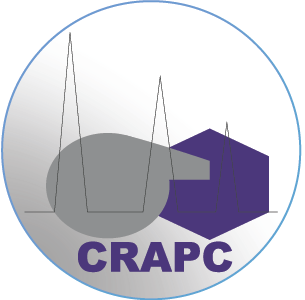Sidali Khedidji1,2, Konrad Müller3, Lyes Rabhi2,4, Gerald Spindler3, Khanneh Wadinga Fomba3, Dominik van Pinxteren3, Noureddine Yassaa 2,5,6, Hartmut Herrmann 3
1 Departments of Chemistry, University of Akli Mohand Oulhadj, Bouira 10000, Algeria
2 Faculty of Chemistry, University of Sciences and Technology Houari Boumediene (USTHB), BP 32 El-Alia Bab-Ezzouar, 16111 Algiers, Algeria
3 Atmospheric Chemistry Department (ACD), Leibniz Institute for Tropospheric Research (TROPOS), Permoserstraße 15, 04318 Leipzig, Germany
4 Unité de Recherche en Analyses et Développement Technologiques en Environnement-Centre de Recherche Scientifique et Technique en Analyses Physico-chimiques UR-ADTE- CRAPC, BP 384, Zone industrielle RP, 42004 Bou Ismail, Tipaza, Algérie
5 Centre de Développement des Energies Renouvelables (CDER), BP 62, Route de l’Observatoire, Bouzaréah, Algiers, Algeria
6 Commissariat aux Energies Renouvelables et à l’Efficacité Energétique, CEREFE, 12 Rue Docteur Saâdane, Algiers, Algeria
Received: December 24, 2019
Revised: July 3, 2020
Accepted: July 26, 2020
ABSTRACT
Daily concentrations of inorganic and organic compounds associated with PM10, i.e., atmospheric particulate matter with aerodynamic diameter of less than 10 µm, was determined at the south Mediterranean coastal area located in Bou Ismaïl, 40 km west of the Algiers city area in Algeria. From September 2011 to January 2012, chemical characterization of aerosol particles comprising water-soluble ions (WSI), trace metals, carbonaceous aerosols, the anhydrosugars levoglucosan and arabitol, dicarboxylic acids, and semi-volatile organic compounds (SVOC), i.e., alkanes, PAHs, and hopanes, was carried out by using a variety of analytical techniques. Overall, the concentrations of selected ionic species were similar to those reported at other Mediterranean sites, ranging from 3.62 µg m–3 to 5.20 µg m–3 for the monthly total WSI. Sulfate was the most abundant ion. The total concentrations of semi-volatile organic compounds (SVOC) recorded in Bou Ismaïl ranged from 7.06 to 58.8 ng m–3 for n-alkanes, from 2.44 to 35.3 ng m–3 for polycyclic aromatic hydrocarbons (PAHs), from 0.14 to 1 ng m–3 for hopanes, and from 0.67 to 13.2 ng m–3 for n-alkan-2-one. In order to reconcile species concentrations and their emission sources, sampling days were grouped into two categories according to air mass origin. In the first group, the aerosol particles were mainly of a marine origin, while those of the second group originated in the dust sector. A source analysis of total contents organic compounds (PAHs, alkanes, hopanes, and alkanones) and individual inorganic compounds by spearman rank correlation illustrated that the principal sources consisted of sea salt, secondary aerosol, and biomass burning. Additionally, PM10 constituent diagnostic ratios and the carbon preference index (CPI) for n-alkanes indicated the importance of anthropogenic emissions.
Keywords: PM10; Ions; SVOC; PAHs; Anthropogenic sources

